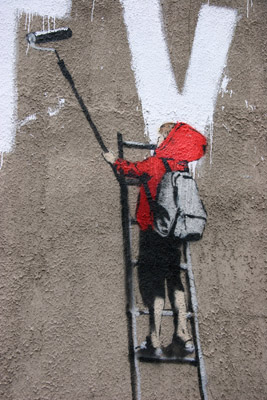As previously mentioned in an earlier post – I would be doing something with an image of the Gucci by Gucci advertisement –subverting it. From the tools and research I have learnt this semester, I will perform my own culture jam (with my awesome paint skills), adding to the effect of the environmental spin towards the product (and company) I am encoding.
To understand what I have done and why, you need to know the background to the situation.
Gucci is a well-known global brand that deals within luxury fashion and beauty products. The Gucci Group, an Italian company owns this brand, which sell luxurious accessories and products. After decoding the ad, my research uncovered three issues that I believe should be brought to attention in this ad.
These are Gucci’s contradicting stances towards Climate Change as well as Capitalism and “true beauty”. I chose these to focus on (there were more) but I believe they bring a truth to the ethos of the Gucci Group to consumers and shift people’s consciousness and mindshare. I make these changes through a collection of visuals, textual changes and associations of colours and tones.
CLIMATE CHANGE:
This ‘jam’ informs others that often there is a lot a company decides to avoid when promoting a products campaign. With this being said, my intended message in my ‘jammed’ picture highly comments that the Gucci perfume; the product, is just one of the several forms of dangerous chemicals that contributes to the environmental issue of climate change (when used in large consumptions). In 2009, the Gucci Group teamed up with the Rainforest Action Network to protect endangered forests from climate change. I found it hypocritical that a product they produce and sell at upmarket prices is contributing to the very issue their company is trying to prevent at a larger scale; and are as result – destroying the world as depicted by the burning world in the model’s hands (notably replacing the original perfume bottle). This connotes the argument of the perfume contributing to climate change, which is effective in its message, that buying this product, you are a part of the cause of global warming. This is added by the fact of changing their slogan, to include a “pollution” cloud that the fragrance achieves.
By playing on the same communication and media, as well as logos – the product and company are still recognised, yet with a new message. This is how the most effective culture jams operate as I have said in other posts. If you can manipulate small changes in an ad, people can still understand what is going on.
CAPITALISM:
The wash over tone of red of the ad symbolises power being capitalism; this is because the company is pushing a product and driving a consumerist need to obtain the product – without them thinking of the ramifications from the chemicals inside. Gucci wants profits; and if a fancy smelling perfume will do this – then who really cares about climate change anyway?
TRUE BEAUTY:
The conflicting yellow glare (yellow associates with sickness and disease which can be brought about from being too thin is not healthy) on the model’s skin. It has an almost ‘x-ray’ vision that connotes to skeletons and thinness as an underlying message of the ‘true’ beauty behind the photo-shopped figure is not so beautiful at all. As well as in the industry of beauty products it is only concerned with participants in a consumerist society, which often is driven by the choreographed, photo-shopped women presenting them and forming such ideal’s about what society builds to be considered ‘beautiful’.
These three issues are the most important I believe to touch on, as they definitely paint a different picture towards Gucci than the image they promote through their advertisements and partnerships. Culture Jams inform publics of the real issues at hand that companies try to sweep under the carpet.
If anyone has any other information about Gucci I should include or comments about my jam, please let me know; it’d be interesting to hear what you think.






